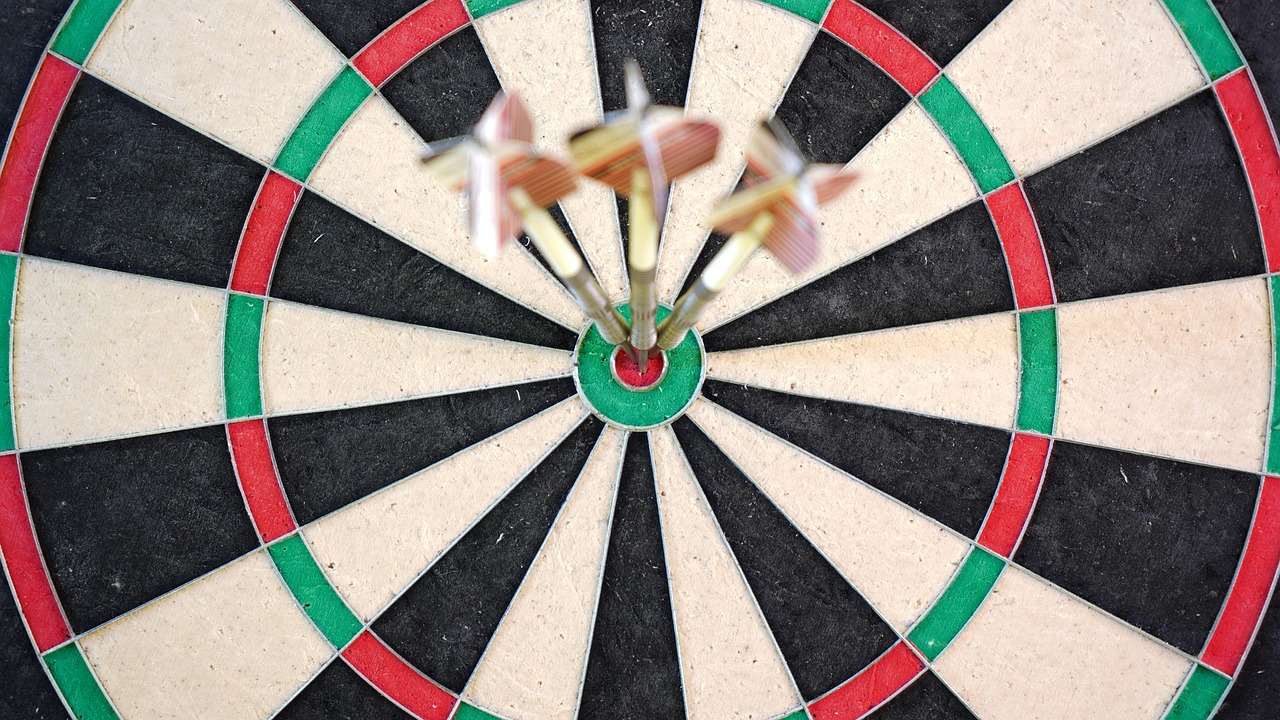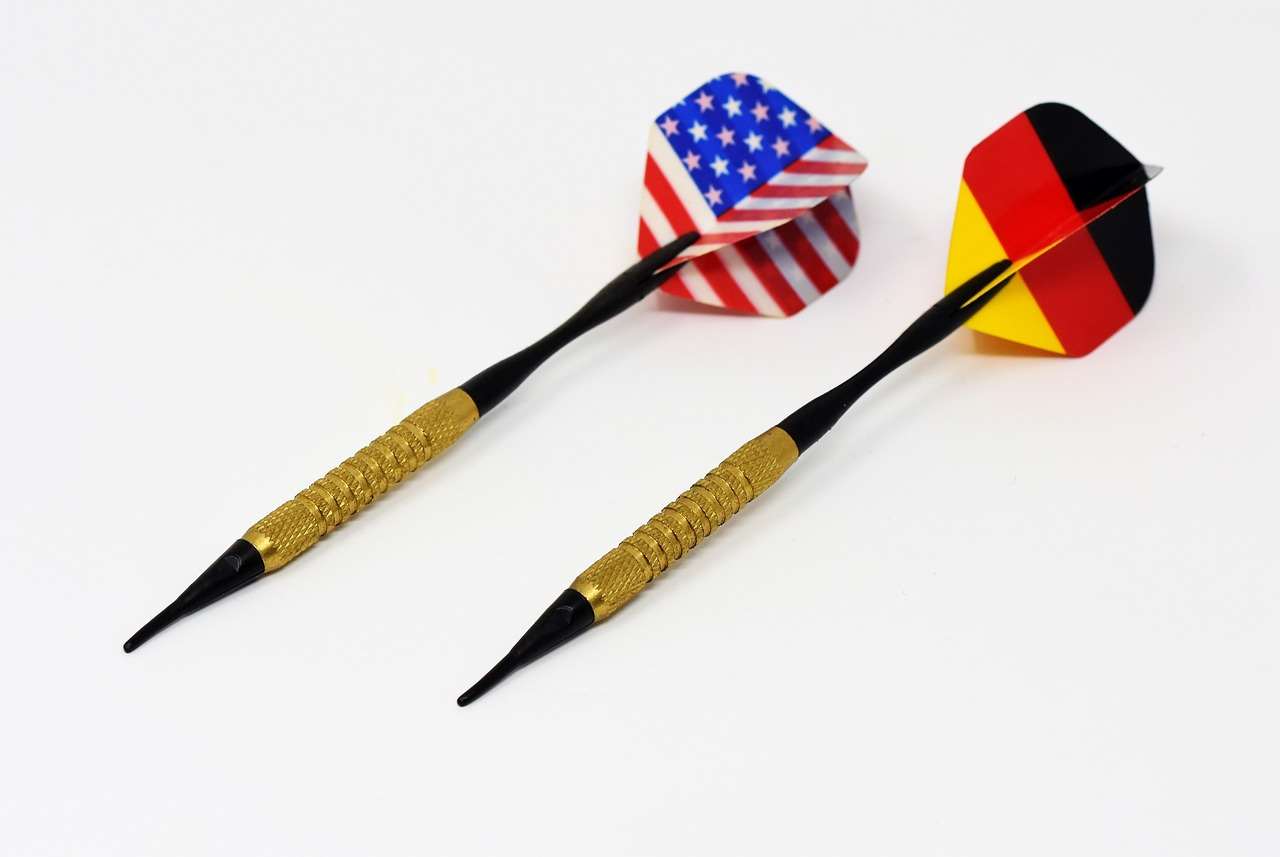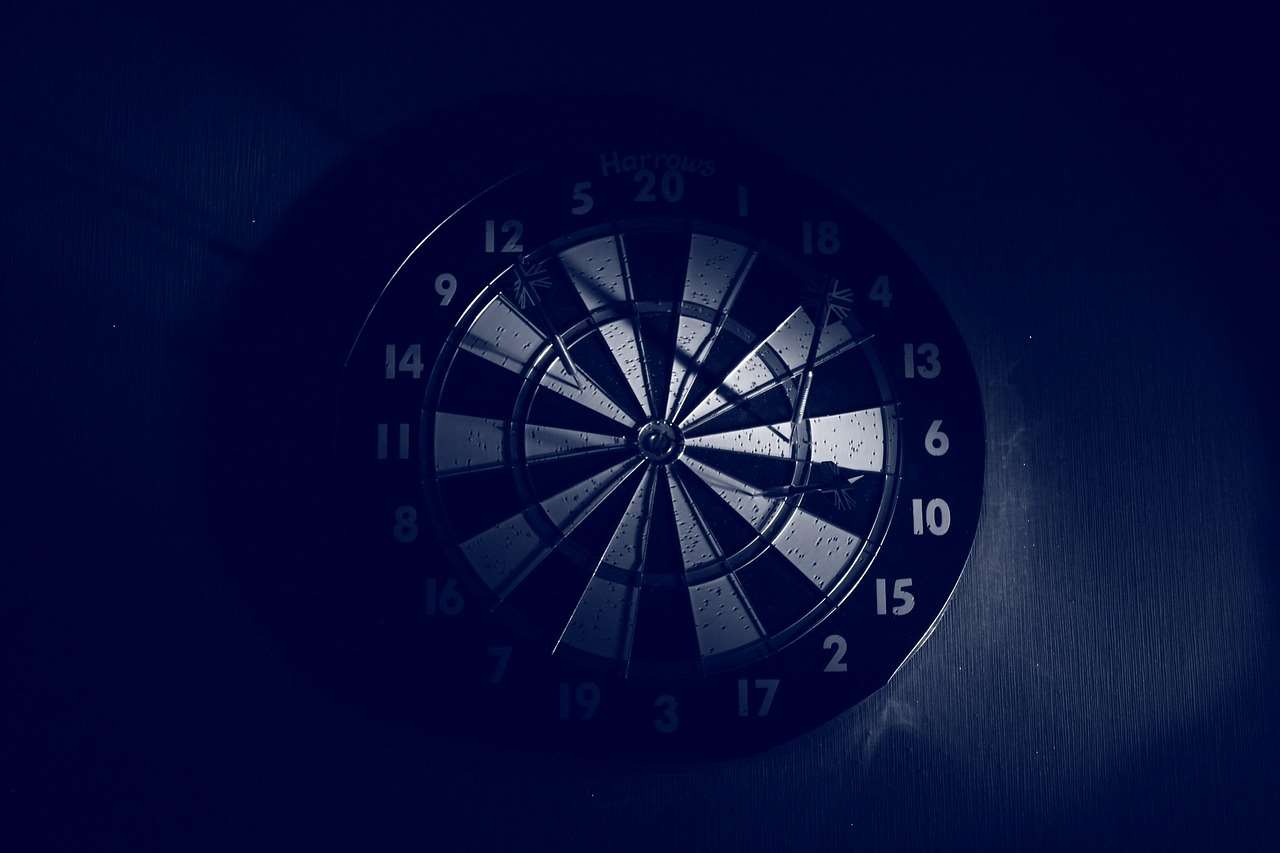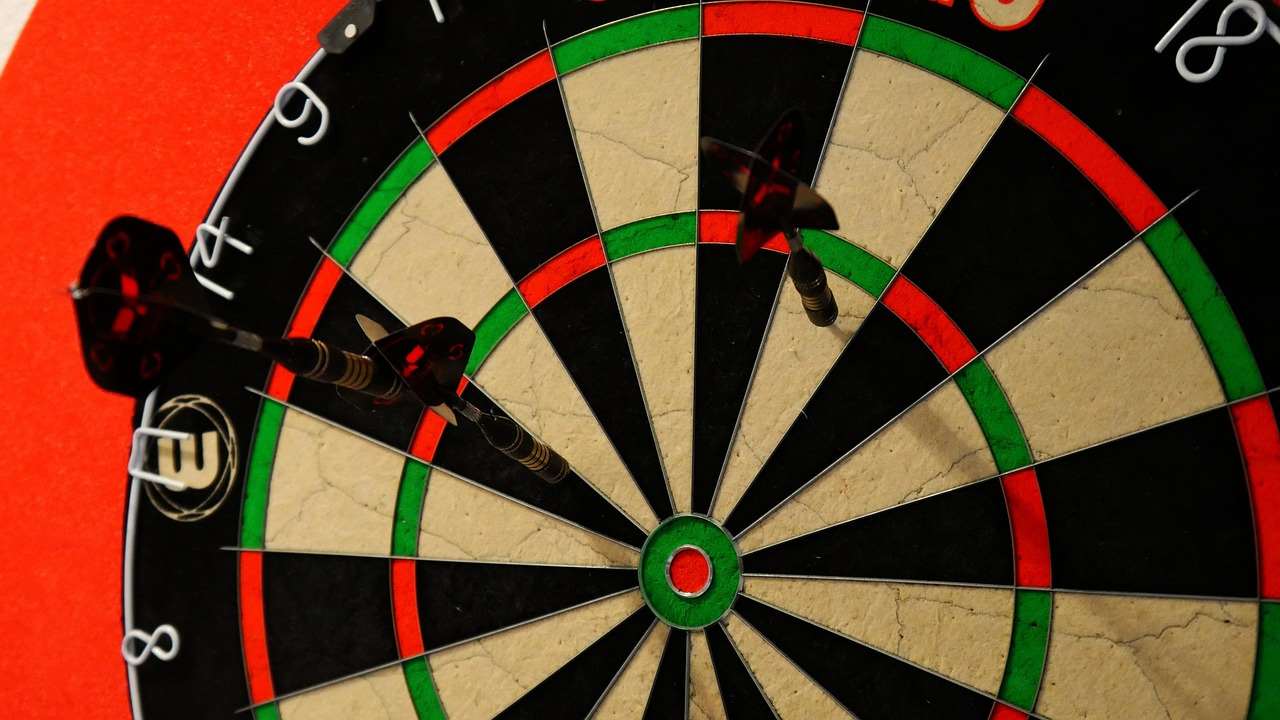The **twenty one darts game rules** are simple: score exactly 21 points to win! This article delves into the complete rules, strategies, variations, and everything else you need to master this exciting dart game.
⚠️ Still Using Pen & Paper (or a Chalkboard)?! ⚠️
Step into the future! The Dart Counter App handles all the scoring, suggests checkouts, and tracks your stats automatically. It's easier than you think!
Try the Smart Dart Counter App FREE!Ready for an upgrade? Click above!
Understanding the Basics of Twenty One Darts
The game of Twenty One, sometimes called “Twenty-One-Up,” is a fun and fast-paced dart game that’s perfect for players of all skill levels. It’s a great alternative to the more common ’01 games and offers a different kind of challenge. The objective is simple: be the first player to reach a score of exactly 21. But don’t be fooled by its simplicity; strategy and precision are key to victory. It’s also considered to be one of the Darts Variants Fun Games.

Core Gameplay: Aiming for 21
Each player takes turns throwing three darts per round. The score for each round is the sum of the values of the darts that land in scoring zones on the dartboard. However, the twist lies in the scoring rules surrounding exceeding 21. This adds a layer of strategy and makes it more than just simply trying to score the highest possible points each round.
Detailed Twenty One Darts Game Rules
Let’s break down the specific **twenty one darts game rules** to ensure you understand how to play correctly. Knowing these rules thoroughly will give you a significant advantage when facing your opponents.

Starting the Game
- Players: Typically, two or more players can participate.
- Dartboard Setup: The dartboard should be mounted according to standard regulations (bullseye at 5 feet 8 inches from the floor).
- Determining the First Player: Players can toss a single dart at the bullseye, and the player closest to the bullseye goes first.
Scoring System
- Standard Scoring: Each dart scores the value of the section it lands in (single, double, or triple).
- Going Over 21: If a player scores more than 21 in a round, their score for that round is *subtracted* from their total score. This is the crucial element that defines the game and forces players to adopt strategic approaches.
- Reaching 21 Exactly: The first player to reach a score of exactly 21 wins the game.
Example Scenarios
To illustrate how the scoring works, consider these examples:
- Scenario 1: A player has a score of 15. They throw darts that score 4, 3, and 2. Their new score is 15 + 4 + 3 + 2 = 24. Since 24 is over 21, their score for the round (9) is subtracted: 15 – 9 = 6. Their new total is 6.
- Scenario 2: A player has a score of 18. They throw darts that score 1, 1, and 1. Their new score is 18 + 1 + 1 + 1 = 21. They win!
- Scenario 3: A player has a score of 19. They throw darts that score 5, 5, and 5. Their new score is 19 + 15 = 34. Since 34 is over 21, their score for the round (15) is subtracted: 19 – 15 = 4. Their new total is 4.
Strategic Approaches to Playing Twenty One
Winning at Twenty One requires more than just accurate throwing. Understanding the game’s dynamics and employing smart strategies is essential. Here are some tips to help you improve your gameplay and understand the **dart throwing techniques** that might help.

Playing Defensively
When you’re close to 21, you may want to play defensively. This means aiming for lower-scoring areas to avoid going over. For example, if you’re at 19, aiming for single 1s is a safe strategy. It may seem counter-intuitive, but consistently hitting low scores can be the most effective path to victory.
Knowing When to Take Risks
Sometimes, you’ll need to take risks to catch up with an opponent or to put yourself in a better position. If you are significantly behind, you might need to aim for higher-scoring areas, even with the risk of going over. Understanding these risks is very important. Also, understanding forgotten pub dart games can broaden your overall dart strategy.
Targeting Specific Numbers
Pay close attention to the numbers that can help you get to 21 precisely. If you’re at 16, focus on hitting a single 5. If you’re at 10, the single 11 can be your best friend. Knowing the dartboard layout and common combinations is crucial. For example, if you are at 17, aim for a single 4.
Common Mistakes and How to Avoid Them
Even experienced dart players can make mistakes in Twenty One. Knowing these pitfalls can help you steer clear of them and maximize your chances of winning.
Overconfidence and Aggressive Play
One common mistake is getting overconfident when close to 21 and aiming for overly ambitious shots. Remember, consistency and control are more important than flashy plays. Stay disciplined and focus on hitting your target accurately. Playing aggressively might seem like a good idea, but it often leads to costly mistakes.

Ignoring the Risk of Going Over
Another frequent error is not considering the possibility of exceeding 21. Always calculate the potential consequences of your throws, especially when your score is high. It’s better to play defensively and score less than to risk losing points by going over. Many players fail to adjust their strategy as they approach 21, which often leads to them going over the target and losing points unnecessarily. This is one of the most important things to know about **twenty one darts game rules**.
Neglecting Opponent’s Score
Paying attention to your opponent’s score is vital. If they’re close to winning, you might need to take more risks to catch up. On the other hand, if they’re far behind, you can afford to play more cautiously. Being aware of the game’s dynamics and your opponent’s progress is key to making informed decisions.
Variations of Twenty One Darts
While the core rules of Twenty One remain the same, there can be some variations to add a different flavor to the game.

House Rules
In some variations, players might agree on specific house rules, such as limiting the number of rounds or introducing bonus points for hitting certain targets. These variations can make the game more interesting and cater to the preferences of the players. Before starting, be sure to clarify any specific house rules. Sometimes these include variations of old dart games rules.
Team Play
Twenty One can also be played in teams, with players taking turns to contribute to the team’s overall score. This adds a collaborative element to the game and can be a fun way to play with friends. When playing in teams, communication and coordination are essential for success. Make sure the team members agree on a strategy and communicate effectively throughout the game.
Conclusion
Mastering the **twenty one darts game rules** provides a fun and unique challenge for dart players of all levels. By understanding the scoring system, employing strategic approaches, and avoiding common mistakes, you can significantly improve your chances of winning. Remember to play defensively when needed, take calculated risks, and always pay attention to your opponent’s score. Why not gather some friends, practice these tips, and enjoy a thrilling game of Twenty One? Time to grab your darts and aim for that perfect 21! For more information, see if there is any relationship to obscure dartboard games list.
Hi, I’m Dieter, and I created Dartcounter (Dartcounterapp.com). My motivation wasn’t being a darts expert – quite the opposite! When I first started playing, I loved the game but found keeping accurate scores and tracking stats difficult and distracting.
I figured I couldn’t be the only one struggling with this. So, I decided to build a solution: an easy-to-use application that everyone, no matter their experience level, could use to manage scoring effortlessly.
My goal for Dartcounter was simple: let the app handle the numbers – the scoring, the averages, the stats, even checkout suggestions – so players could focus purely on their throw and enjoying the game. It began as a way to solve my own beginner’s problem, and I’m thrilled it has grown into a helpful tool for the wider darts community.